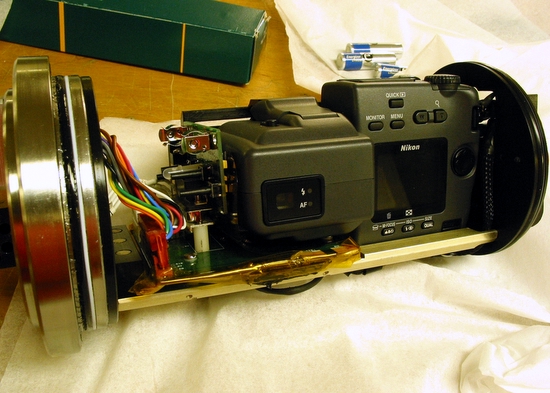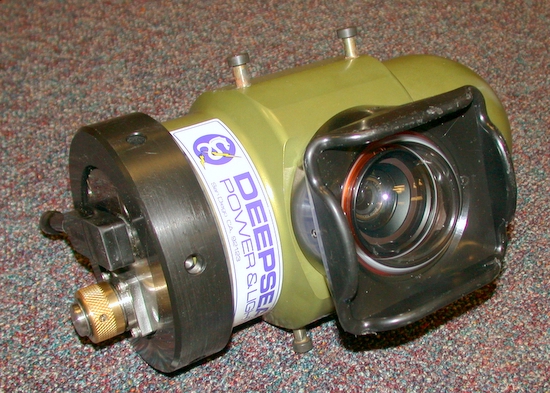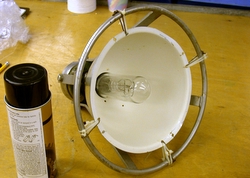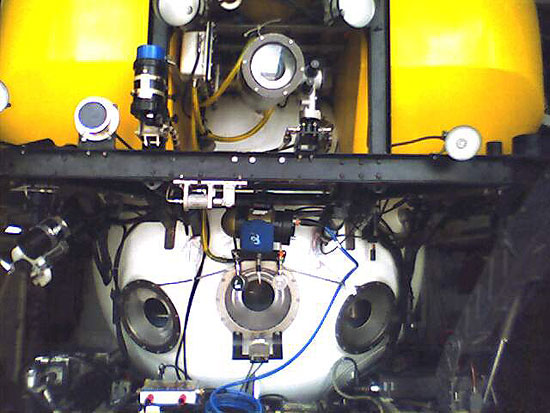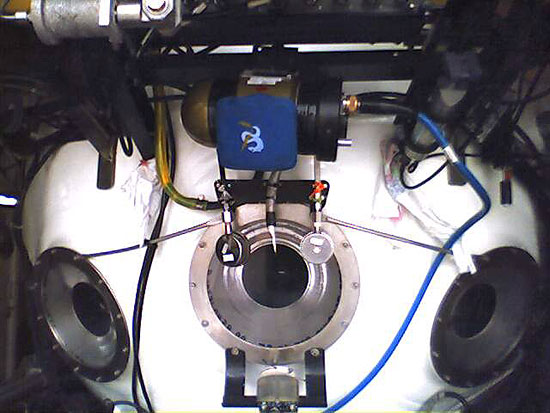Deep Sea Cameras and Strobes
Overview
Deep-sea photography is over 50 years old, having begun with the early technical efforts of Ewing et al. and Edgerton. Photographs of the sea floor provided some of the first clues about the abundance of life in the deep ocean, lava flows on the mid-ocean ridge crest, and evidence for hydrothermal venting. They have further shown important causal links between geologic and biological phenomena on the deep ocean floor; traditional photomosaicing has facilitated seafloor mapping and analysis of relationships among seabed features. These direct observations of the ocean floor are critical to a more complete understanding of the processes occurring there.
The deep sea camera and strobe assembly is an autonomous, self-contained still camera. It was built as a imaging solution for numerous projects: the TowCams, the Time-Lapse Camera, the Alvin Down-Looking Camera and others that need high-pressure digital imaging capability.
Camera
The DSPL DigiSeaCam offers a flexible, high-resolution digital photography system that can be applied to a variety of oceanographic imaging applications. The system provides a 6000-meter-depth-rated, 3.3 Megapixel digital camera (Nikon 995 Coolpix) with a 2GB CompactFlash card for internal image storage. The DSPL camera can operate in either attended or unattended modes (for time-lapse photography), and can be programmed to have a delay that permits descent to the seafloor without taking photographs, thereby saving images for the seafloor traverse. The camera utilizes a DigiSnap controller board (currently a DigiSnap Model 2300 with firmware rev. 3.02- manufactured by Harbortronics. The controller board allows automated control over the interval between photographs. It can be set for intervals between 10 sec to several minutes depending on the use
Housing
The Coolpix 995 is contained in a pressure housing designed by Mark Olsson of DSPL with collaboration by Daniel J. Fornari. The housing has a corrected dome port midway down its body that generates crisp, wide-angle photographs exhibiting a minimum of geometric distortion. The lens on the housing is a multi-element, pseudo-telecentric, A/R coated corrective lens. The housing also contains the timing circuit responsible for firing the camera and strobe lights.
The housing is also engineered to provide the capability to operate the camera, change time-lapse settings and upload photographs without having to open it.
Strobes
Illumination for the photographs is provided by a Benthos 383 strobe electronics unit and two Benthos 386 flash heads. Each head provides 300 watt/sec of illumination; total illumination is 600 watt/sec.
The DigiSeaCam's timing circuit, contained in the housing, triggers the flash each time it takes a photograph. Wiring between the camera and strobe system is done in the Power Junction Box (J-box).
Minimum recharge time for the strobe system is 7-8 seconds. To ensure full light output with each flash a minimum interval of ten seconds between each picture has been set.
